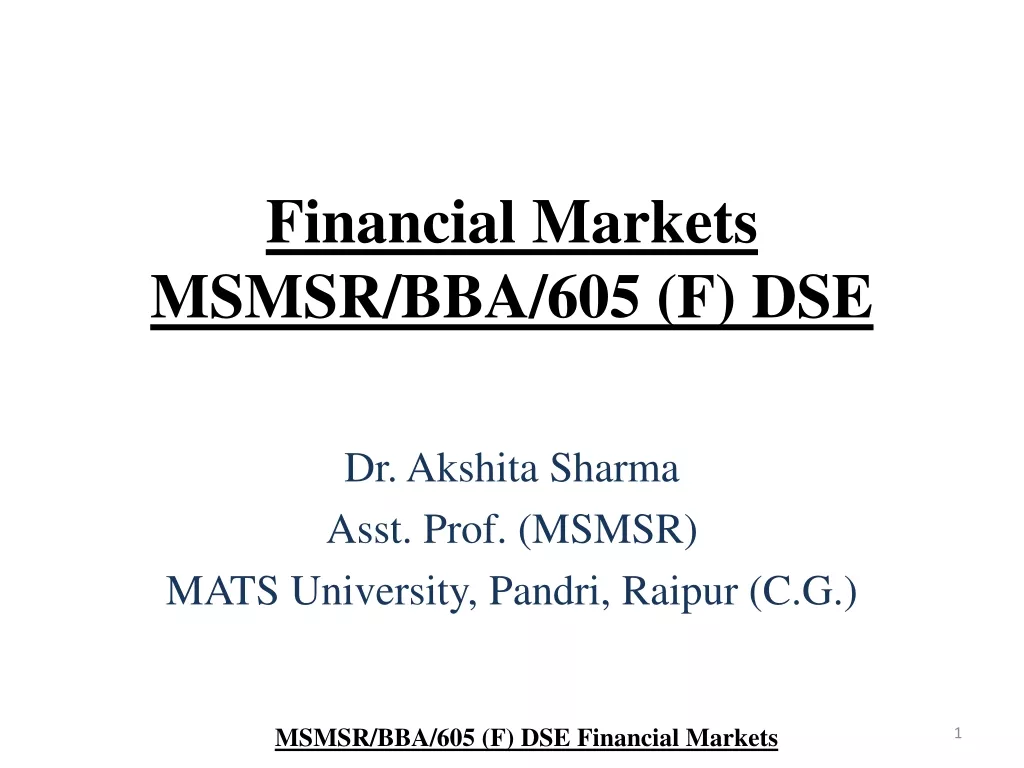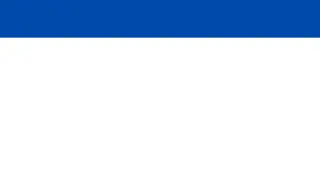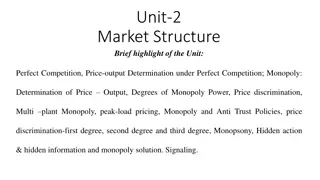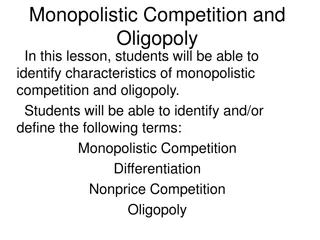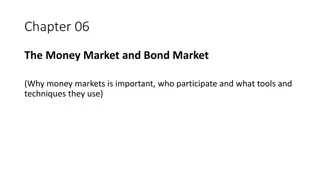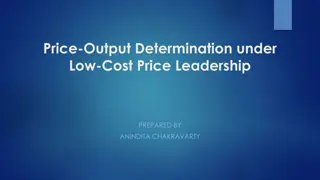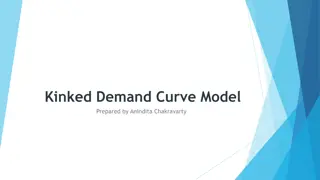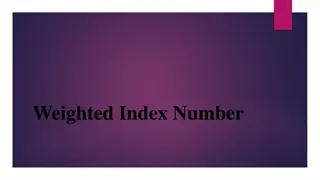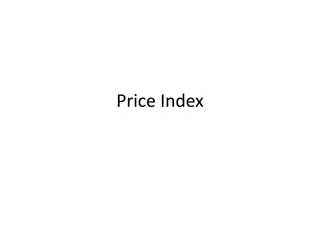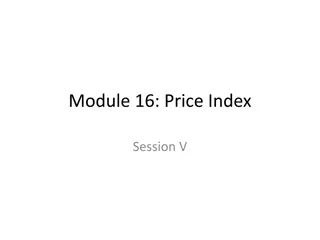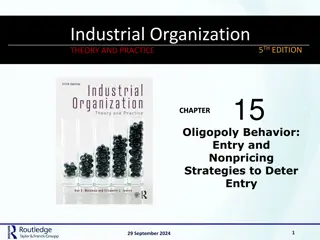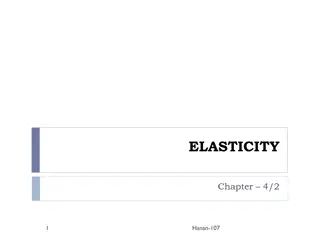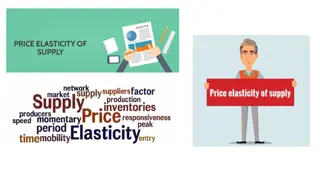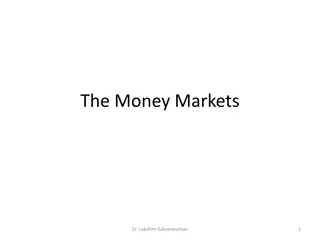Price Leadership in Oligopoly Markets
Explanation of price and output determination in markets with a dominant firm exhibiting price leadership. The dominant firm utilizes market demand and small firms' supply curves to maximize profits, setting prices accordingly. Small firms follow the leader's pricing, collectively producing a portion of the market demand. Profit maximization strategies and market equilibrium are illustrated through graphs and detailed descriptions.
Download Presentation

Please find below an Image/Link to download the presentation.
The content on the website is provided AS IS for your information and personal use only. It may not be sold, licensed, or shared on other websites without obtaining consent from the author.If you encounter any issues during the download, it is possible that the publisher has removed the file from their server.
You are allowed to download the files provided on this website for personal or commercial use, subject to the condition that they are used lawfully. All files are the property of their respective owners.
The content on the website is provided AS IS for your information and personal use only. It may not be sold, licensed, or shared on other websites without obtaining consent from the author.
E N D
Presentation Transcript
Price Price- -Output Determination under Price Output Determination under Price Leadership by the Dominant Firm Leadership by the Dominant Firm PREPARED BY ANINDITA CHAKRAVARTY
We now proceed to explain the determination of price and output when there exists price leadership by a dominant firm which is having a large share of the market with a number of small firms as followers each of which has a small share of the market. To explain this we assume that the dominant firm knows the total market demand curve for the product. Further, the dominant firm also knows the marginal cost curves of the smaller firms whose lateral summation yields the total supply of the product by the small firms at various prices. This implies that from his past experience the dominant firm can estimate fairly well the likely supply of the product by the small firms at various prices. With this information, the leader can obtain his demand curve
Consider panel (a) of Fig. where DD is the market demand curve for the product, Smis the supply curve the product of all the small firms taken together. At each price the leader will be able to sell the part of the market demand not fulfilled by the supply from the small firms. Thus at price P1the small firms supply the whole of the quantity of the product demanded at that price. Therefore, demand for leader s product is zero. At price P2, the small firms supply P2C and therefore the remaining part of CT of the market demand will constitute the demand for the leader s product. The demand for leader s product has been separately shown in panel (b) of Fig. 6 by the curve dL. P2Z in panel (b) is equal to CT in panel (a). At price P3, the supply of the product by the small firms is zero. Therefore, the whole market demand P3U will have to be satisfied by the price leader. Likewise, the other point of the demand curve for the price leader can be obtained. In panel (b) of Fig. 6 the MRLis the marginal revenue curve of the price leader corresponding to his demand curve dL. AC and MC are his average and marginal cost curves. The dominant price leader will maximize his profits by producing output OQ (or PH) and setting price OP. The followers, that is, the small firms will charge the price OP and will together produce PB. [PH in panel (b) equals BS of panel (a) in Fig.


